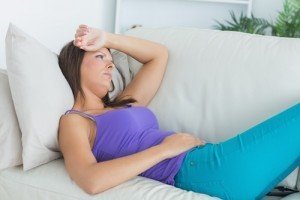News
Restless Leg Syndrome – It May Be Varicose Veins

 Restless Leg Syndrome (RLS) affects as much as 15 percent of the general population and negatively impacts their quality of life. Those with RLS experience irresistible urges to move their legs; a “creeping” feeling in the legs; persistent leg movement during sleep; or tingling, burning, aching or numbness of the legs. Symptoms of RLS are worse at night or during periods of relaxation, such as lying down during the day and tend to improve with activity. The symptoms disrupt the sleep not only of the RLS sufferer but can disrupt the sleep of their bed partner as well. The standard treatment for RLS is neurologic medication. Unfortunately, the available medications only relieve the symptoms, they do not cure the condition and must be taken long term.
Restless Leg Syndrome (RLS) affects as much as 15 percent of the general population and negatively impacts their quality of life. Those with RLS experience irresistible urges to move their legs; a “creeping” feeling in the legs; persistent leg movement during sleep; or tingling, burning, aching or numbness of the legs. Symptoms of RLS are worse at night or during periods of relaxation, such as lying down during the day and tend to improve with activity. The symptoms disrupt the sleep not only of the RLS sufferer but can disrupt the sleep of their bed partner as well. The standard treatment for RLS is neurologic medication. Unfortunately, the available medications only relieve the symptoms, they do not cure the condition and must be taken long term.
An often-overlooked cause of RLS is venous insufficiency. Several studies indicate that as many as 22 percent of those with RLS also have venous insufficiency. In venous insufficiency, or varicose vein disease, the blood valves do not work properly and allow some blood to flow backwards and pool in our legs, which can, but not always, result in bulging veins and causes symptoms such as pain, swelling, tiredness, redness or restlessness. Edema, or swelling, that occurs with venous disease often lessens at night and that is believed to somehow cause the “creeping” sensation described by patients with restless leg syndrome. When restless legs occur with venous insufficiency, the RLS can be improved significantly by treating the varicose veins. A study published in the Journal of Phlebology reported that in patients with both RLS and venous disease, 98 percent had their RLS symptoms relieved with varicose vein treatment and 80 percent of those treated experienced long-term relief.
Anyone who suffers from the symptoms of Restless Leg Syndrome should be evaluated for venous insufficiency, typically with a diagnostic ultrasound assessment. If varicose vein disease is present, a course of endovenous laser treatment (EVLT), sometimes combined with sclerotherapy, offers the best opportunity for improving the symptoms of RLS and possibly eliminating the need for medication.
